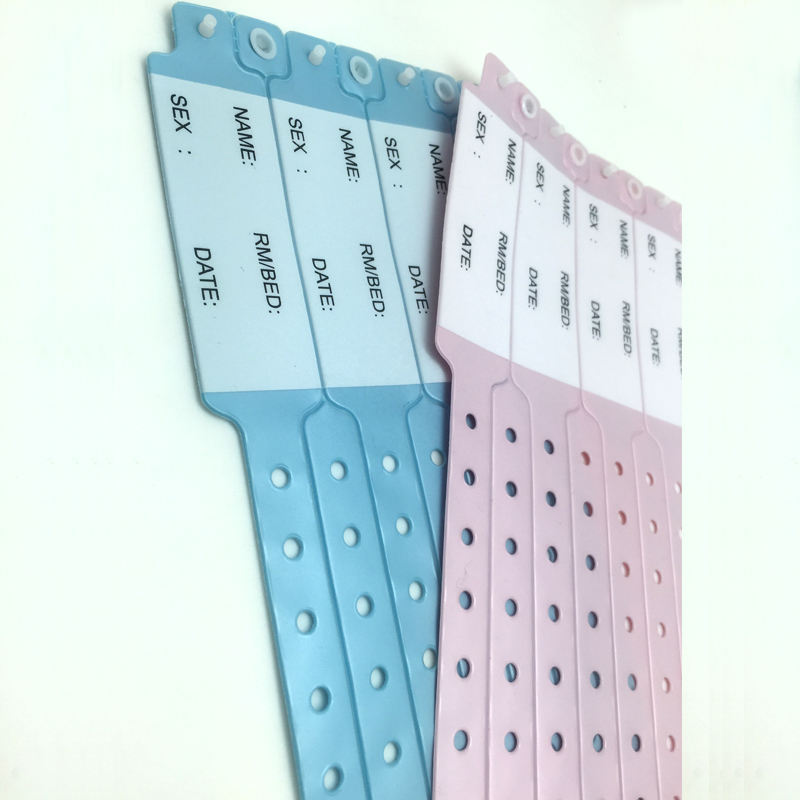Exactly How Patient Identification Band Minimizes Dangers in Patient Treatment and Care
Exactly How Patient Identification Band Minimizes Dangers in Patient Treatment and Care
Blog Article
Enhancing Person Care With Effective Identification Bands
The execution of efficient recognition bands is a critical element in boosting individual care within health care settings. These bands not just serve to minimize the threats connected with individual misidentification but likewise streamline interaction amongst clinical employees, consequently promoting a safer atmosphere. Various types of identification bands provide to particular demands, from resilient wristbands for adults to specialized bands for babies and important situations. As the landscape of client recognition progresses, one should consider the implications of these systems on general healthcare delivery and individual results. What developments wait for in this critical location?
Importance of Patient Identification
Making sure precise patient identification is critical in medical care setups, as it directly influences the security and quality of care given. Misidentification can bring about major mistakes, including administering the wrong medication, executing wrong treatments, or miscommunicating vital person information. Such mistakes not only jeopardize client safety however can additionally lead to lawful ramifications and reduced count on medical care systems.
Effective client identification is basic to establishing a safe environment where individuals receive personalized and proper treatment. It assists in the exact documentation of case histories, allergies, and therapy plans, making sure that doctor have access to essential details in any way times. Additionally, durable recognition methods aid enhance communication amongst medical personnel, improving partnership and lowering the danger of blunders.

Kinds Of Identification Bands
Identification bands play a critical duty in preserving exact client documents and improving security within health care environments. Different kinds of identification bands are utilized to accommodate the details demands and demands of various person populations.

An additional type is the ankle band, which is especially valuable for babies and babies, making certain that recognition continues to be intact also throughout treatment procedures. Specialized bands, such as those for allergic reaction signals or fall danger signs, provide added layers of security by drawing instant focus to crucial individual conditions.
Just recently, electronic identification bands have actually obtained appeal, integrating barcodes or RFID innovation that can be checked to quickly retrieve patient data. These bands enhance operations and minimize the threat of human mistake during person recognition procedures.
Benefits of Efficient Identification
Efficient identification of individuals through using identification bands contributes significantly to general person security and care quality. By guaranteeing that each client is precisely determined, doctor can properly match clinical therapies and treatments to the right person, decreasing the threat of errors. This is particularly essential in atmospheres with high client turn over, where the possibility for misidentification is greater.
Furthermore, efficient identification bands enhance interaction among medical care teams. Clear and accurate person recognition cultivates collaboration and makes sure that all staff member are conscious of an individual's specific requirements and case history. This interaction is vital for supplying worked with treatment, specifically in emergency situation circumstances where time is important.

Ultimately, effective recognition through making use of recognition bands not only safeguards clients but additionally advertises a society of security within healthcare facilities my explanation (Patient Identification Band). By focusing on accurate recognition, healthcare companies can improve end results and boost the total client experience
Implementing Recognition Solutions
While the importance of client identification is well identified, the application of robust recognition systems presents a complex obstacle for health care organizations. Developing efficient recognition systems needs an extensive approach, including technology, employees training, and process assimilation.
First, companies need to select proper recognition technologies, such as barcode scanning, RFID, or biometric systems. Patient Identification Band. These modern technologies ought to be reviewed based on price, usability, and compatibility with existing framework. A pilot program can help determine possible problems prior to full-scale application
Following, extensive training for team is important. All employees must comprehend the significance of precise individual identification and excel in making use of the picked technologies. Routine training updates and evaluations can enhance best methods and make certain continued compliance.
In addition, healthcare organizations must create standard procedures for individual recognition throughout all departments, enhancing and lessening disparities communication. Regular audits can aid recognize spaces in adherence to these protocols.

Eventually, an efficient execution of identification systems not only enhances client safety but also fosters a society of liability and persistance within health care settings, guaranteeing constant and reputable individual care.
Future Trends in Person Identification
Advancements in modern technology are established to transform person identification practices in medical care setups. The integration of biometric recognition techniques, such as fingerprinting and facial recognition, is anticipated to improve accuracy and safety and security. These technologies can significantly lower the danger of misidentification, making certain that people get the correct treatments and medications.
In addition, the application of blockchain technology for individual records is getting traction. This decentralized strategy can offer a secure and tamper-proof technique for handling person identities, therefore improving accessibility to crucial details across various medical care carriers.
Another fad is the increasing usage of mobile wellness applications that leverage QR codes for client identification. These applications enable real-time updates and simple accessibility to patient data, encouraging healthcare professionals to make educated choices quickly.
In addition, expert system (AI) is poised to play a crucial duty in analyzing client recognition over at this website information, recognizing patterns, and predicting prospective recognition mistakes before they take place.
As these innovations progress, they guarantee not just to enhance person security however additionally to boost the total performance of healthcare delivery systems. Accepting these innovations will be vital for future-proofing patient care practices.
Verdict
Finally, reliable recognition bands are essential for boosting individual safety and care quality within healthcare setups. By minimizing the threats related to misidentification, these bands assist in accurate and prompt information retrieval, eventually enhancing communication among doctor. The implementation of durable recognition systems not just cultivates a society of security but likewise settings health care institutions to adapt to future trends in client recognition modern technology, ensuring optimum results for clients in diverse professional atmospheres.
As the landscape of client identification develops, one have to consider the ramifications of these systems on general medical care distribution and individual outcomes.Effective patient recognition is basic to establishing a safe environment where patients receive personalized and suitable care. Inevitably, focusing on reliable patient recognition strategies not only promotes a society of safety yet also adds to enhanced client outcomes and overall satisfaction with healthcare services.
Efficient identification of individuals with the use of recognition bands contributes dramatically to total patient safety and security and care high quality. The implementation of durable identification systems not just promotes a society of safety and security yet also placements healthcare institutions to adjust to future trends in person identification technology, making sure optimum outcomes for patients in diverse medical atmospheres.
Report this page